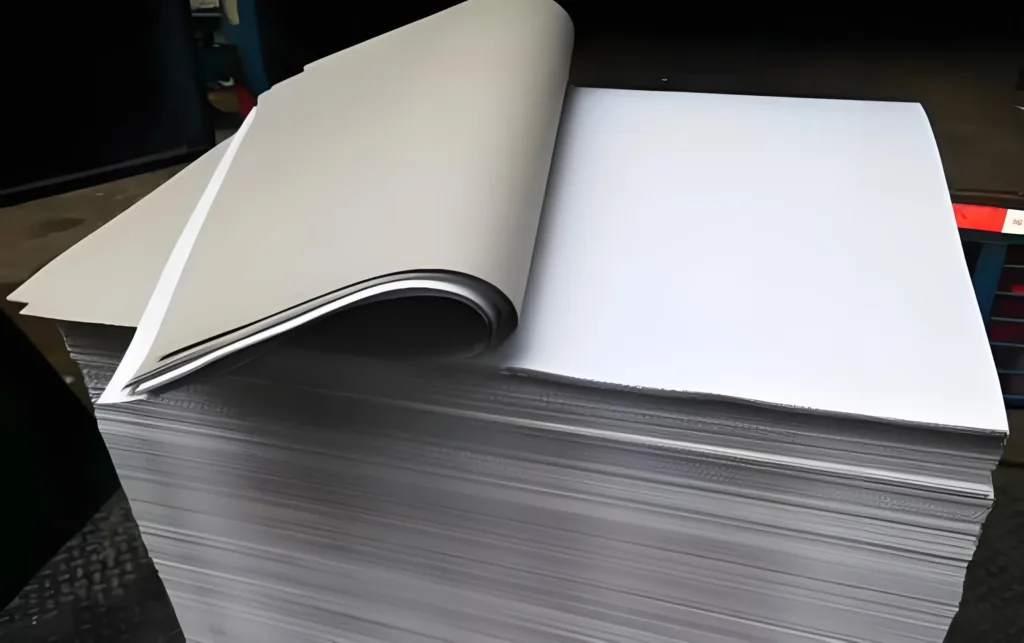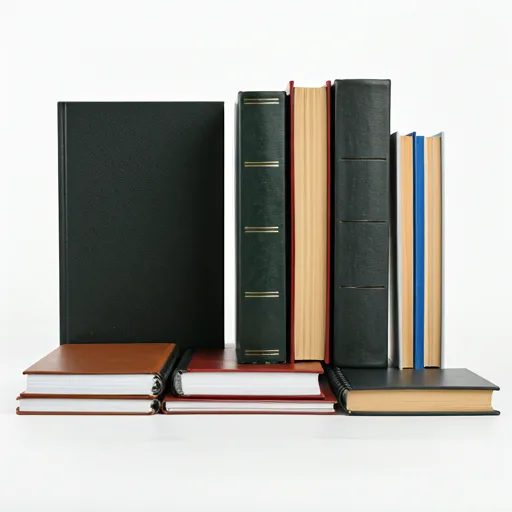As a small press, you know that providing quick and accurate book printing quotes is crucial in today’s competitive publishing world. But let’s be honest, juggling manuscripts, editing, marketing, and then trying to figure out printing costs can feel like a lot. Don’t worry, we’ve got you covered!
To provide quick and accurate book printing quotes, you need to understand the key factors that influence printing costs, such as paper type, printing method, binding style, and finishing options. Develop a standardized quoting process, utilize quote templates, and leverage technology to streamline your workflow. Don’t forget to build strong relationships with your printing partners and offer value-added services to enhance your client relationships.
This guide will walk you through the essentials of providing book printing quotes efficiently and professionally, so you can win clients and focus on what you do best: bringing amazing books to life.
The Need for Speed and Accuracy in Book Printing Quotes
In the bustling world of publishing, time is of the essence. Authors are eager to see their books in print, and delays can lead to frustration and lost opportunities. That’s why providing quick turnaround times on quotes is essential.
But speed isn’t everything; accuracy is equally important. An inaccurate quote can lead to misunderstandings, cost overruns, and even damage your reputation.
By streamlining your quoting process, you can:
- Enhance client satisfaction: Impress your authors with your professionalism and efficiency.
- Improve your productivity: Free up time to focus on other aspects of your business.
- Gain better control over costs: Avoid surprises and ensure profitability.
“Fast” Isn’t Just About Speed, It’s About Responsiveness and Proactive Quoting
In today’s fast-paced world, clients expect quick responses and efficient service. As a small press, you can set yourself apart by being incredibly responsive to inquiries. Consider setting up dedicated communication channels, like a live chat on your website or a dedicated email address for quote requests. This allows you to address client needs promptly and demonstrate your commitment to excellent service.
But “fast” also means being proactive. Anticipate client needs by preparing pre-made quote packages for common book formats and printing options. This allows you to provide quotes quickly while still tailoring them to specific requirements.
Breaking Down the Elements of a Book Printing Quote
To provide accurate quotes, you need a solid understanding of the factors that influence printing costs. Let’s break down the key elements:
Key Cost Drivers

-
Paper: The type of paper you choose significantly impacts the final look, feel, and cost of your book.
- Coated paper has a smooth, glossy finish, making it ideal for books with images. Uncoated paper has a more natural feel and is often preferred for text-heavy books.
- Paper weight is measured in pounds (lb) in the US or grams per square meter (gsm) elsewhere. Heavier paper generally means higher costs.
- Paper sourcing can also affect pricing. Recycled paper or paper from sustainable sources might have a premium.
- Example: Imagine you’re printing an art book. Using a premium coated paper with a high gsm will result in vibrant images and a luxurious feel, but it will also increase the book printing cost compared to using a standard offset paper.
-
Printing: The printing method you choose will depend on the length of your print run and your budget.
- Offset printing is cost-effective for large print runs and offers high quality. Digital printing is ideal for shorter runs and allows for greater flexibility.
- Ink coverage and the number of colors used will also affect the price. Full-color printing (CMYK) is more expensive than black and white. Using spot colors (Pantone) can add to the cost.
- Example: Printing 1000 copies of a novel using offset printing will generally be cheaper per unit than printing 500 copies using digital printing.
-
Binding: The binding style you choose will depend on the type of book and its intended use.
- Perfect binding is a popular choice for paperback books. Saddle stitch is commonly used for booklets and magazines. Other options include spiral, wire-o, and case binding (hardcover).
- Example: A cookbook with many pages might be best suited for perfect binding, while a short story collection could be more economically produced with saddle stitch.
-
Finishing: Finishing touches can enhance the appearance and durability of your book.
- Lamination (matte or gloss) adds a protective layer to the cover. UV coating provides a high-gloss finish. Embossing/debossing creates raised or recessed designs. Foil stamping adds metallic accents.
- Example: Adding spot UV coating to certain elements on a book cover can create a visually striking effect and highlight specific design features. You can learn more about special printing processes to enhance book quality.
-
Other Factors: Don’t forget to consider these additional costs:
- Shipping costs can vary depending on the distance, weight, and shipping method.
- Turnaround time can influence the price, with expedited orders often costing more.
- Proofing options (digital or physical proofs) can add to the overall cost.
- Storage and fulfillment services, if needed, will also factor into the final price.
Do you feel overwhelmed by all these factors? Don’t worry, it gets easier with practice! And remember, you can always consult with your printing partners for guidance.
As Frank Romano, Professor Emeritus at Rochester Institute of Technology, wisely advises, “The more information you give a printer, the better the chances of getting an accurate quote.”
So, be thorough in your communications and don’t hesitate to ask questions.
Resources for Estimating Printing Costs
Now that you understand the key cost drivers, let’s explore some resources that can help you estimate printing costs quickly and accurately.
Developing Your Own Pricing Database
Creating your own pricing database can be a valuable asset for your small press. This database can store information on:
- Common book sizes and formats
- Paper types and weights
- Binding styles
- Printing costs for different quantities
- Finishing options and their associated costs
By keeping this information organized and readily available, you can generate quotes more efficiently and ensure consistency in your pricing. Remember to update your database regularly to reflect changes in printing costs and market trends.
Matching Printing Options to Client Needs
Not all books are created equal, right? A children’s picture book has different needs than a hefty textbook. Understanding the nuances of various book types and their target audiences is key to providing accurate quotes and, more importantly, ensuring client satisfaction.
Understanding Different Book Types and Target Audiences
- Fiction: Novels, short story collections, and poetry books often prioritize readability and affordability. Readers might expect a lighter-weight paper and a standard paperback format.
- Non-fiction: Biographies, self-help books, and how-to guides may require higher-quality paper for images and illustrations. Durability might also be a factor if the book is intended for frequent use.
- Textbooks: These often prioritize durability and clear typography. They might require heavier paper, sturdy binding (like Smyth sewn), and features like thumb indexes or durable covers.
- Children’s Books: Durability is paramount here, with board books being a popular choice for younger readers. Bright colors and engaging illustrations are also essential, so paper choice is crucial.
A Guide to Selecting Printing and Binding Options

Here’s a simplified guide to help you navigate the world of printing and binding options:
- For shorter books with lower page counts (under 64 pages): Saddle stitch binding is a cost-effective and efficient choice.
- For books with higher page counts (over 64 pages): Perfect binding is a popular option for a professional look and feel.
- For books that need to lay flat (cookbooks, textbooks): Spiral, wire-o, or lay-flat binding options are worth considering.
- For premium books or special editions: Hardcover binding (case binding) offers a luxurious and durable option.
“Accurate” Isn’t Just About the Price, It’s About the Right Solution
Of course, accurate pricing is crucial. No one wants to deal with surprise costs or hidden fees. Mastering cost calculation and staying informed about market prices is essential. But providing the right solution is equally important.
Take the time to understand your client’s vision for their book. What type of book is it? Who is the target audience? What kind of impression do they want to make? By asking the right questions, you can guide them toward the most suitable printing and binding options, ensuring their satisfaction and building trust.
Case Study
A small press specializing in art and photography books wanted to create a unique, limited-edition book showcasing the work of a renowned photographer. They opted for a lay-flat binding style to allow the panoramic photographs to spread across two pages without interruption.
They also chose a high-quality, textured paper to complement the artistic nature of the photographs. This thoughtful selection of printing and binding options resulted in a stunning book that exceeded the client’s expectations and garnered critical acclaim.
By carefully considering the specific needs of each book project, you can guide your clients toward the most suitable and cost-effective printing solutions.
Building Strong Relationships with Printing Partners
Your relationship with your printing company can make or break your publishing success. Open communication, trust, and mutual understanding are vital for a smooth and productive partnership.
Clear and Concise Communication
When communicating with your printer, clarity is key. Ensure you provide all the necessary information upfront, including:
- Book specifications: Trim size, page count, paper type, ink colors, binding style, finishing options.
- Printing requirements: Quantity, turnaround time, proofing needs.
- Budget constraints: Be upfront about your budget to explore cost-effective solutions.
Pro Tip: Develop a standardized checklist or template to ensure you don’t miss any crucial details when requesting a quote.
Negotiating and Problem-Solving
Negotiation is a natural part of any business relationship. Don’t be afraid to discuss pricing, explore different options, and seek the best value for your money. If issues arise during the printing process, address them promptly and professionally. Maintain open communication with your printer to find solutions that work for both parties.
The Value of Long-Term Partnerships
Building a long-term relationship with a reliable printer can offer numerous benefits:
- Preferential pricing: You may be able to negotiate better rates for repeat business.
- Faster turnaround times: A trusted printer will prioritize your projects and ensure timely delivery.
- Consistent quality: You can rely on consistent quality and attention to detail with a long-term partner.
In today’s rapidly evolving printing landscape, it’s essential to stay informed about new technologies and trends. Digital printing, for instance, has opened up opportunities for shorter print runs and on-demand printing, allowing small presses to manage inventory more efficiently and reduce waste.
Creating a Standardized and Efficient Workflow
Imagine a world where providing quotes is a breeze, not a burden. That’s the power of a streamlined workflow! By implementing a standardized process and leveraging technology, you can transform your quoting process from chaotic to calm.
Develop a Step-by-Step Quoting Process
Start by mapping out a clear and consistent process for handling book printing quotes. This might include:
- Receiving client requests: Establish clear channels for receiving quote requests (email, online forms, phone calls).
- Gathering information: Use a standardized form or checklist to collect all the necessary details about the book project (specifications, quantities, deadlines, etc.).
- Calculating costs: Refer to your pricing database or use online tools to estimate printing costs.
- Generating quotes: Create professional-looking quotes using templates that clearly outline the pricing breakdown and terms.
- Following up: Follow up with clients promptly to answer any questions and secure the order.
Many small presses are now adopting project management software to streamline their workflows and improve communication. These tools can help you track deadlines, manage tasks, and collaborate with clients and printing partners more effectively.
Utilize Quote Templates
Creating quote templates can save you time and ensure consistency in your pricing. Your templates should include:
- Company logo and contact information
- Client name and contact information
- Project description
- Book specifications (trim size, page count, paper type, binding style, etc.)
- Printing options (quantity, ink colors, finishing options)
- Pricing breakdown (clearly itemize each cost component)
- Payment terms
- Delivery details
- Terms and conditions
Leverage Technology
Technology can be your best friend when it comes to streamlining your quoting process. Consider these options:
- Printing management software: This type of software can help you manage all aspects of your printing projects, from quotes and orders to production and delivery.
- CRM systems: A CRM (Customer Relationship Management) system can help you track client interactions, manage quotes, and automate follow-up communication.
- Online quoting tools: Integrate online quoting tools into your website to allow clients to request quotes easily and receive instant estimates.
Artificial intelligence is increasingly being used in the printing industry to automate tasks and improve efficiency. While AI-powered quoting tools might not be readily available for small presses yet, it’s a trend to watch for in the future.
Learn more about the impact of AI on the printing industry in this insightful article.
Going Beyond the Basic Quote

In today’s competitive market, simply providing a quote isn’t always enough. To truly stand out and attract clients, consider offering value-added services that go beyond the basics.
Offer Expert Consultation
Position yourself as a trusted advisor to your clients. Share your knowledge and expertise to guide them through the printing process. Offer advice on:
- Choosing the right paper and binding options
- Optimizing book design for printing
- Understanding different printing techniques
- Navigating the publishing process
By providing valuable insights and support, you can build stronger relationships with your clients and establish yourself as a go-to resource for their publishing needs.
Expand Your Service Offerings
Think beyond just printing. Could you offer additional services that complement your core offerings? Consider:
- Design services: Partner with a graphic designer or offer in-house design services to help clients create eye-catching covers and layouts.
- Editing services: Provide editing and proofreading services to ensure the quality of the manuscript before printing.
- Marketing services: Offer marketing and promotional support to help clients reach their target audience.
By expanding your service offerings, you can provide clients with a more comprehensive solution and increase the value you offer.
Mastering the Art of the Book Printing Quote
Providing quick and accurate book printing quotes is an essential skill for any small press. By streamlining your workflow, understanding the factors that influence printing costs, and building strong relationships with your printing partners, you can provide exceptional service to your clients and position your business for success.
Remember, the key is to be organized, efficient, and customer-focused. By mastering the art of the book printing quote, you can free up time and resources to focus on what you do best: publishing great books!







